Originally appeared at ZeroHedge
Summary
- 4295 Cases confirmed worldwide
- 106 Dead worldwide
- 2714 Cases in Hubei (up 1291 overnight – a stunning 91% surge)
- 100 Dead in Hubei (up 24 overnight – a 24% surge)
- North Korea closes Chinese border.
- German reports first case
- US raises travel alert for China to Level 3 (2nd highest).
Worldwide Cases:
China:
* * *
Update (2000ET): According to the Health Commission of Hubei Province, there was a massive jump in cases and deaths overnight in China. The death toll from a coronavirus outbreak in China has soared to 106 while nearly 1,300 new cases have been confirmed, authorities said Tuesday.
The health commission in central Hubei province, the epicentre of the epidemic, said 24 more people had died from the virus and 1,291 more people were infected, raising the total number of confirmed cases to more than 4,000 nationwide.
Additionally, KCNA reports that North Korea has officially closed its border crossing with China to prevent Coronavirus from entering the country.
* * *
Update (1830ET): While China currently has about 3,000 total cases as reported earlier, according to the latest report from China’s Center for Disease Control, the real number of infections may be substantially higher, because as of Jan 26 (the update for Jan 27 is due shortly) some 30,453 people are currently under observation for the coronavirus. Needless to say, it is very likely that a substantial number of these people will end up positive for the disease, even as the total of people under observation grows by thousands every single day.
Earlier in the day, the epicenter of the coronavirus outbreak, China’s Hubei Province, is opening up 100,000 hospital beds in an effort to contain the disease, the province’s vice governor announced on Jan. 27. In a press conference on Jan. 27 evening, Hubei vice governor Yang Yunyan said authorities have designated 112 medical institutions to treat patients with the deadly novel coronavirus, according to Chinese state media. They have freed up around 100,000 hospital beds in the province, with 3,000 of them in Wuhan city alone, where the disease first broke out. As the Epoch Times observes, “The urgency and scale of the authorities’ orders have raised fears that the outbreak has spread far more widely than authorities admit.”
Meanwhile, in the latest news on the coronavirus global spread, Germany’ DPA news agency reported that the first coronavirus case was confirmed in Germany. According to the infectious diseases task force of the Bavarian Health and Food Safety Authority, the male patient from the district of Starnberg is clinically in “good condition” and is being monitored while in isolation. Those who have been in close contact with him have been informed and infection control measures have been implemented. Naturally, the Task Force and the Robert Koch Institute (RKI) have said they consider the infection risk to the Bavarian population to be low.
Finally, looking at the US where so far 5 cases have been confirmed, late on Monday the Maryland Department of Health confirmed a state resident was being tested for possibly having the coronavirus. They say the person is in “good condition” as they await results from the CDC laboratory. Similarly, the San Diego County Health Department also said it was investigating a possible case of the coronavirus. Test samples from the patient have been sent to the Centers for Disease Control for confirmation.
* * *
Update (1415): The novel coronavirus has arrived in Cambodia and Sri Lanka, according to local health officials cited by Reuters and the Bangkok Post.
The virus has now been detected in a total of 17 countries/autonomous regions…
Fears that the outbreak will take a sizable chunk out of global GDP have festered amid reports that China’s “manufacturing nerve center” is shutting down as Beijing “extends” the Lunar New Year holiday, according to the Nikkei Asian Review.
During the CDC press conference on Monday (which we covered in full below) the State Department announced an updated travel warning advising US citizens to avoid all non-essential travel to Hubei province, where the virus is believed to have originated, and to take necessary precautions when traveling in China. While the warning maintained a Level 3 for China as a whole, the State Department raised the advisory to Level 4 for Hubei, the most severe warning possible.
Though it doesn’t exactly take a genius-level intellect to ascertain that now isn’t a great time to travel to virus-plagued Hubei.
* * *
Update (1150ET): Dr. Nancy Messonnier, the Director of the Center for the National Center for Immunization and Respiratory Diseases (NCIRD), spoke on behalf of the CDC. During the press conference, she said that the US had identified 110 people who are under observation and being tested for the virus. While 5 cases have already been identified in the US, another 32 have definitively tested negative.
Though a vaccine remains elusive, the Messonnier said the CDC had developed a diagnostic test that can quickly confirm cases of the virus. So far, CDC researchers have seen no signs of “mutation” in the virus. If the virus does mutate, as Chinese scientists suggested it might, that could create problems for those trying to develop the exam. On Friday, a “blueprint” for the test was uploaded and shared with the world. All governments can now follow this blueprint to develop their own tests..
Right now, the CDC is focused on providing tests to “priority” states (presumably, Cali, Washington, Arizona and Illinois, the states where cases have been confirmed). But soon they will expand the program to supply governments in need.
The CDC has also uploaded the entire genome of the virus from the first two cases. From what the CDC can tell so far, the virus doesn’t appear to be “mutating”, as some Chinese officials had suggested.
Messonnier stressed that this is a “rapidly changing situation” both here and abroad, adding that the virus has spread to 16 countries from China.
“Our thoughts are with the people on the front lines of this emerging health threat in China,” she said.
US airports are now screening passengers from Wuhan. The purpose of this is not just preventative: It’s intended to educate passengers about symptoms of the virus, and how to mitigate risk of infection while traveling abroad. The CDC recommends that travelers avoid all non-essential travel to Hubei province, and that anybody traveling to China should take certain precautions.
Returning travelers with symptoms may be asked to take precautionary measures.
Battered US stocks briefly spiked when Messonnier said that although a handful of cases have been identified in the US, the overall general health risk to the community remains “low at this time.” Still, she caveated this by insisting that the situation remains very much in flux.
Meanwhile, in China, more indications of the economic fallout from the outbreak have emerged: Zheijang, the country’s fourth-largest province by GDP, won’t allow companies to return to work until Feb. 8. Shanghai, an independent municipality within the province, announced similar measures earlier. The potential costs here in terms of lost productivity could measure in the hundreds of billions of dollars.
* * *
Update (1030ET): Chinese state media have just confirmed that Beijing has suffered its first confirmed death from the novel coronavirus. They also confirmed 8 new confirmed cases.
#Updates: Beijing reported eight new confirmed #coronavirus cases on Monday, one death. pic.twitter.com/DIdVnInrqY
— Global Times (@globaltimesnews) January 27, 2020
Macau has just confirmed its seventh case.
The total number of confirmed cases has climbed to 2882, though the true number of cases out there is likely much higher, as experts have warned.
* * *
Update(1000ET): US stocks are deep in the red Monday morning, on track for their worst day in four months, thanks to the fact that the market and the world realized over the weekend that the extremely infectious novel coronavirus has overwhelmed China’s capacity to contain it.
And right on time, here comes President Trump, with a weak attempt to pump the market.
Minutes ago, the president tweeted that the US had offered China “any help that is necessary”, while advising that the US is “strongly on watch” for signs that the virus is spreading.
We are in very close communication with China concerning the virus. Very few cases reported in USA, but strongly on watch. We have offered China and President Xi any help that is necessary. Our experts are extraordinary!
— Donald J. Trump (@realDonaldTrump) January 27, 2020
Unfortunately, the reaction in the market was muted, and stocks remain slightly above their session lows.
* * *
Update (0700ET): Chinese health officials have confirmed an additional fatality tied to the virus.
Here’s the latest roundup from Chinese state media:
https://twitter.com/PDChina/status/1221760540390723584
Meanwhile, the FT reports that OPEC and its allies are weighing deeper production cuts in response to the fallout from the virus, which has hammered oil prices. The Brent international benchmark tumbled below $60 a barrel on Monday. The cartel’s next meeting is set for early March in Vienna.
As the world enters panic mode, a team of analysts at JP Morgan assured their clients that the epidemic – which will likely soon qualify as a pandemic assuming the WHO changes course – is merely an “interruption to the narrative” and that the fallout would be confined to China and the broader region – not the entire planet.
Meanwhile, Australia has confirmed its fifth case of the virus: a 21-year-old woman who arrived in Australia on the last flight out of Wuhan to Sydney. In the UK, 52 people have been tested for the virus, but no cases have been confirmed, per ITV.
Earlier, we mentioned that Chinese scientists had reversed their earlier findings and determined that the Hunan Fish Market in Wuhan was, in fact, the epicenter of the outbreak (it’s believed that the market’s trade in wild animals, like bats and snakes, is to blame). Bloomberg has offered a clarification, reporting that the market is one of several sources being investigated.
With US stocks still on track for a brutal open, investors around the world are turning to Jay Powell and the FOMC, which will meet later this week.
* * *
Investors who dismissed the threat to their P&Ls posed by China’s coronavirus outbreak are suddenly realizing that they’ve made a grave miscalculation. What few Asian markets were open on Monday (most were closed for the LNY holiday) saw equities tank, and in the US, futures are pointing to a steep drop at the open – a sign that the market has found the excuse it needed to give back some of its torrid January gains.
With so much going on – the Bolton revelations, the deaths of Kobe Bryant and his daughter, the busiest week of earnings season, and the upcoming Fed meeting – the virus remains the most dominant theme – and with good reason.
As we reported late last night, the number of confirmed cases in China has tripled over the weekend. Health officials have confirmed 2,804 cases in China, where the deal toll has climbed to 80 – giving the virus a roughly 5% mortality rate. Over the weekend, we joked that the scapegoating was already beginning, citing a rash of public outrage directed at health officials and Wuhan, as well as the city’s mayor, Zhou Xianwang.
In typically communist fashion, Zhou accepted responsibility for botching the initial response to the virus, and said he and the local party chief, Ma Guoqiang, would be willing to step down to quiet the public outrage. The government is scrambling to build not one, but two new hospitals in under two weeks to house coronavirus patients in Wuhan, yet doctors and nurses claim that they are still struggling with a shortage of supplies, even after local officials implored neighboring provinces to send assistance. Shortages of everything from beds to facemasks to personnel are still hurting the city’s ability to treat new cases. That lockdown has obviously interfered with shipments of new supplies.
Zhou also conceded that information about the virus was not disclosed in a “timely manner”. In reality, Chinese officials waited a whole month to inform the world about the outbreak after the first cases were discovered in early December. According to the FT, this was a “rare instance of self-criticism” by a senior local party official.
During a press conference on Sunday, Wang Xiaodong said in a press conference that the government was reinforcing medical supplies, but he triggered even more public anger as he Wang corrected himself twice about the number of face masks being made available in the province, initially putting the number at 10.8 billion, then changed it to 1.8 billion before correcting himself again to say that the real number was 1.8 million masks. Public anger was also directed at Wang because he neglected to wear a face mask during the presser, while Mayor Zhou appeared to wear his mask upside down.
After appointing Premier Li Keqiang to head the party’s committee to oversee the crisis response over the weekend, Li arrived in Wuhan on Monday, the SCMP reports. In a PR coup for the government, reporters followed Li as he visited patients and medical personnel fighting on the front lines of the outbreak and delivered some inspired speeches.
“You are trying every means to save lives,” Li told medical staff at Jinyintan hospital, one of the designated institutions in Wuhan for treating infected patients. “When you are putting your efforts to save lives, you have to protect yourselves too.”
Li will apparently remain on the ground in the province, where he will direct the effort to combat the virus’s spread.
But the Chinese premier wasn’t the only major figure to travel to Wuhan on Monday: The WHO director-general is traveling to the city to try and assess the situation on the ground in Wuhan after meeting with senior officials in Beijing.
Wuhan Mayor Zhou’s announcement over the weekend that roughly 5 million people had already left Wuhan before the lockdown began made it seem like combating the virus’s spread at this point would be virtually impossible. In Beijing on Monday, He Qinghua, the first-degree inspector of the Disease Prevention and Control Bureau, confirmed what many – including on CNBC reporter – suspected. In addition to the 11 million ‘official’ residents of Wuhan, the city is also host to millions of migrant workers from the countryside. Almost all of those workers have already returned home, threatening to spread the virus across China’s impoverished rural areas where awareness of prevention strategies is minimal.
To fight this, China must mobilize a “grass roots” campaign of party officials.
“The awareness [of prevention and control] is relatively low in the countryside. We will need to fill the gap of this weak link,” He said. “The most important thing now is mobilizing our cadres at the grass-roots level so we can do better in our prevention and control work at the community level.”
Here’s the latest roundup of cases, courtesy of the SCMP, which has consistently maintained the most accurate figures.
Even though researchers reportedly cast doubt on the virus’s connection to the Wuhan food market illegally trading in wild animals, scientists on Monday said they had, in fact, found evidence of the virus at the market. A strain of the virus was isolated from samples taken at the market. The strain was isolated from environmental samples taken from the Huanan seafood market in Wuhan. A phot of the virus, known as 2019-nCoV, can be found below.
Per the SCMP, the virus was detected in 35 of the 585 environmental samples collected on Jan. 1 and Jan. 12, with 33 of the positive samples taken from the market’s western zone, where the wildlife trading business was concentrated.
Outside of the mainland, Taiwan reported its fifth case on Monday.
Several neighboring countries announced precautions to prevent the virus from crossing over from China: Mongolia has closed all educational institutions until at least March 2, and has closed its border with China to all pedestrian and vehicle crossings. Kazakhstan has suspended its 72-hour visa-free program for holders of Chinese passports. In Myanmar, the United Wa State Army, a political group for the Wa people, said it would shut down all entertainment in the autonomous territory, while imposing strict border checks on all outsiders. The group has also barred all large public gatherings and instructed the population to cease eating wild animals.
In Seoul, South Korean President Moon Jae-in said Monday that his administration was preparing a “complete enumeration” of people entering the country from Wuhan. And any travelers entering the country from China will need to fill out a ‘health questionnaire’. Even Iran is taking precautions, prohibiting Chinese and people from Southeast Asia from bringing food into the country. Russian tour operators have stopped selling tours in China, and are only bringing Russian citizens back from the country.
According to Feng Luzhao, a researcher with the Chinese CDC, insisted that the most effective way to stop the spread of the disease would be to reduce travel.
“[We have decided] to extend the Lunar New Year holidays because [we want] to encourage people to stay home and avoid going to areas where infection may be prevalent and places with large crowds of people,” Feng said. “[We believe] this can help curb the spread of the disease.”
To try and stop the spread, China has ordered an ‘extension’ of the Lunar New Year Holiday, with several manufacturing hubs and other centers of industry deciding to stay closed into February.
Meanwhile, more health researchers in China are warning that the state is woefully undercounting the number of cases. A researcher at HKU med school announced that his new estimate for active cases in China is closer to 25,000.
HKU Med School head Gabriel Leung is meeting press with a mask on. He is going to announce new estimation of #nCoV2019 . pic.twitter.com/tZk2qlZegH
— Xinqi Su 蘇昕琪 (@XinqiSu) January 27, 2020
HKU Med School head Gabriel Leung apologised again for his inappropriate comment made on Friday that he and officials couldn’t speak with mask on . pic.twitter.com/qRDsr3O2h3
— Xinqi Su 蘇昕琪 (@XinqiSu) January 27, 2020
Key takeaway so far
1, Wuhan is estimated to have over 25,000 confirmed cases and over 43,000 infections
2, Wuhan lockdown doesn’t really help to stop spreading in other major cities in China
3, Chongqing can be the most affected,followed by Beijing Shanghai Guangzhou Shenzhen— Xinqi Su 蘇昕琪 (@XinqiSu) January 27, 2020
4, April and May can see major outbreaks in the aforementioned four major cities. It may come one to two weeks earlier in Chongqing.
5, HK and Macau should not only look at directly traffic links with Wuhan (!)— Xinqi Su 蘇昕琪 (@XinqiSu) January 27, 2020
“the Hong Kong government should…not really sort of go and answer the question should we do more about more Chinese major metropolises … but rather how can we sustain Hong Kong food supply, Hong Kong's ability and capacity to deal with a major epidemic.“ – Prof Gabriel Leung.
— Xinqi Su 蘇昕琪 (@XinqiSu) January 27, 2020
“The lockdown measure adopted by various cities in mainland China is absolutely correct” – Prof Gabriel Leung
— Xinqi Su 蘇昕琪 (@XinqiSu) January 27, 2020
Over in the US, a fifth case of coronavirus was confirmed in Arizona. With the trajectory of the virus confirming the worst fears of epidemiologists, we suspect this won’t be the last case in the US.




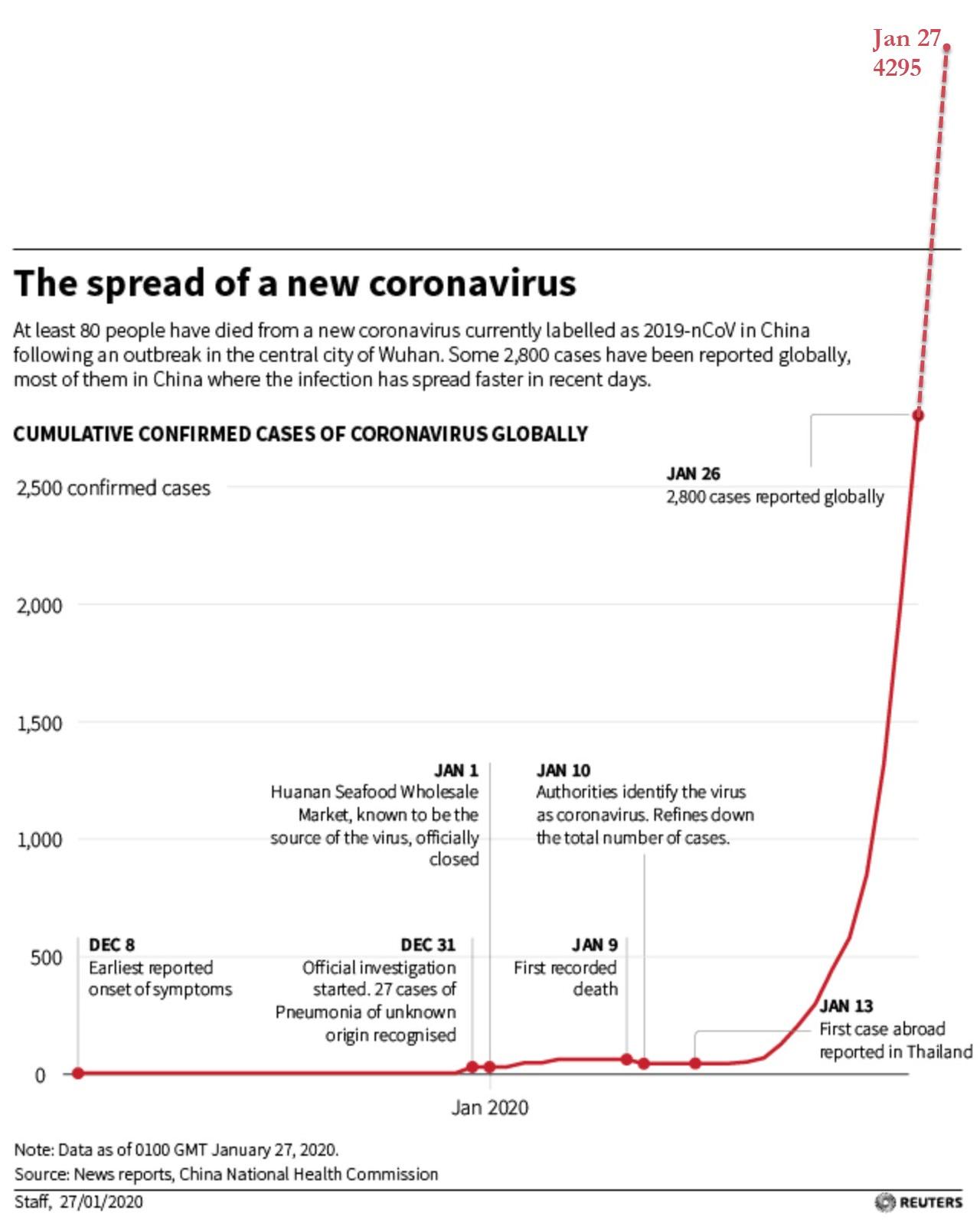
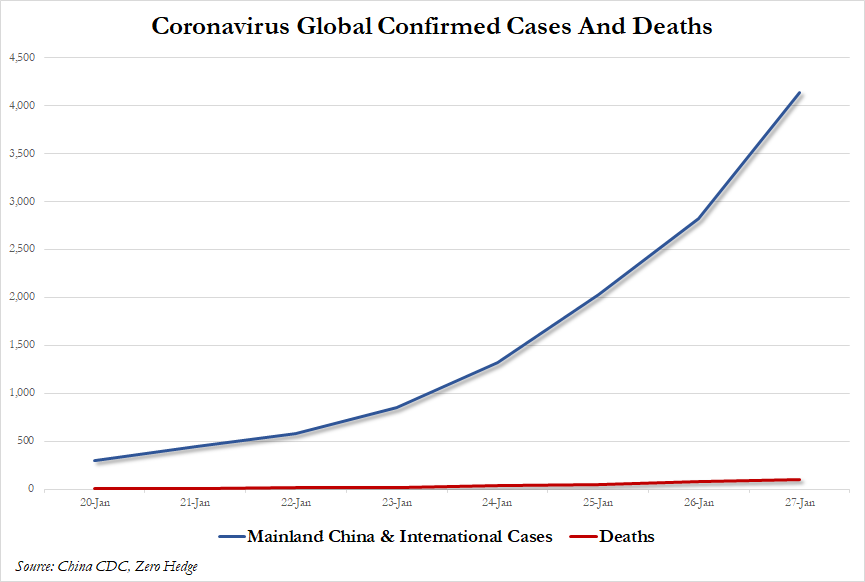
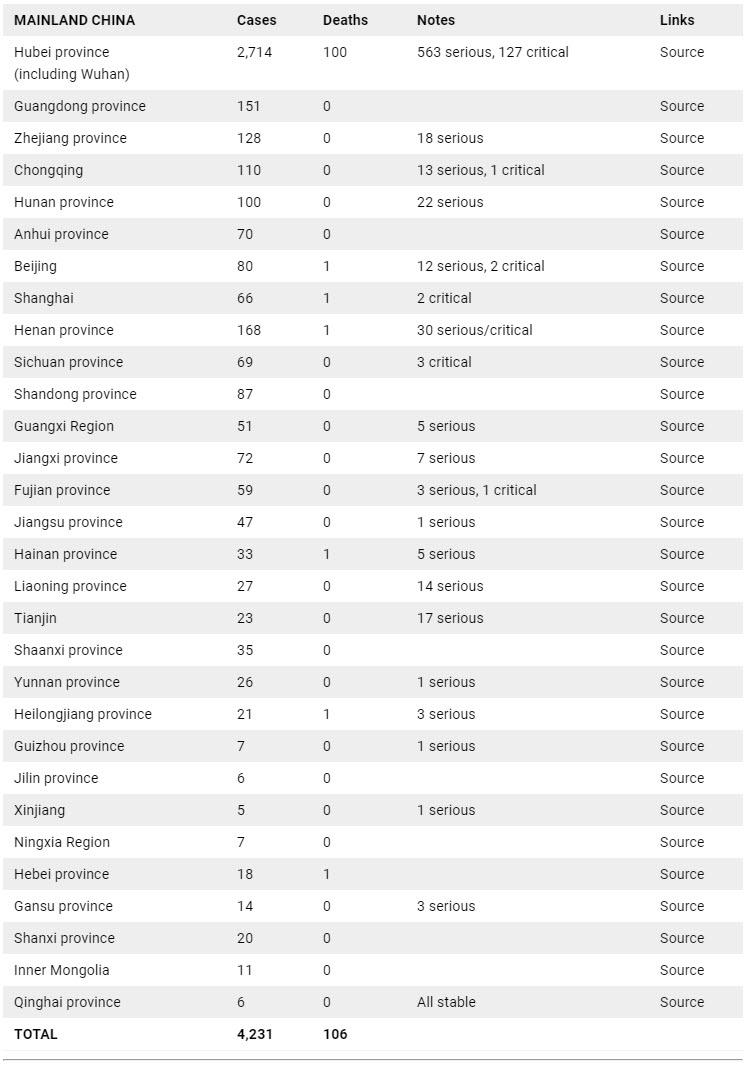
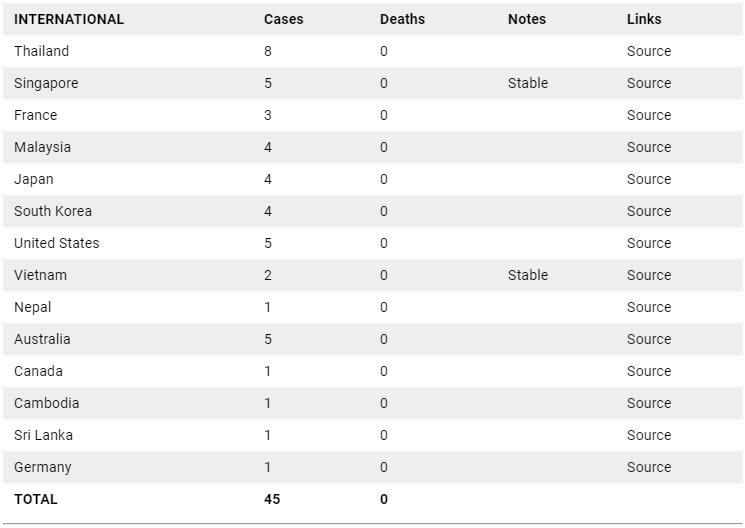
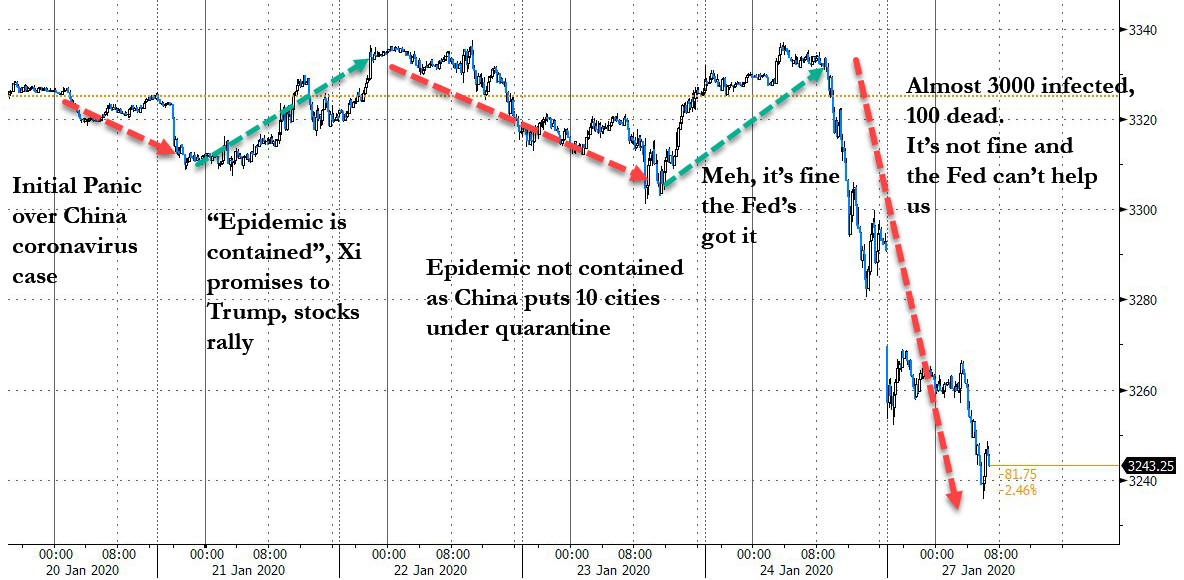
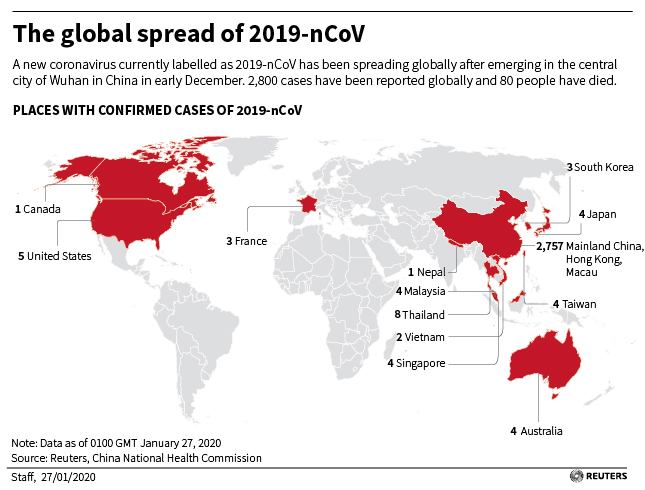
Blah blah blah we’re all going to die blah blah blah Repent your sins blah blah blah
please somebody stop this!!!!